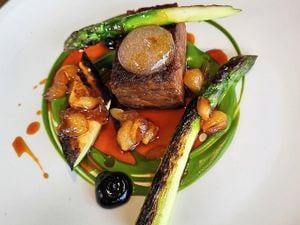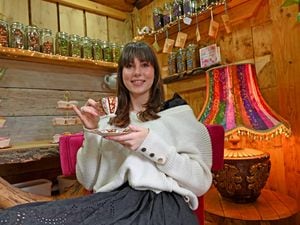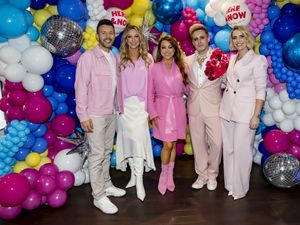What it's like to be a horse physiotherapist
Sue Palmer has always had an affinity with horses.
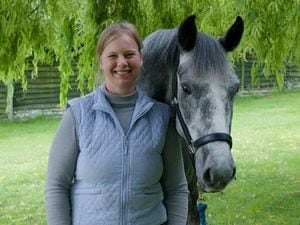
The 43-year-old believes passionately in helping owners to improve their relationship with their horses.
She has been riding since the age of three and now works as an equine physiotherapist and behavioural consultant.
“Most of all I enjoy helping horses feel better. I say ‘helping’ not ‘making’, because I see physio as basically pressing the right buttons to get the body to do it’s own healing,” says the mother of one.
While growing up, she was a member of the Pony Club and went on to win the National Riding Club one-day event.
“We were lucky enough to keep our horses at home – thanks mum and dad! – and I think the career was just a natural progression.
“It was never planned – I was going to be a housewife with three children but sometimes life has other plans,” says Sue, who lives in Stafford.
“I followed a wholly unconventional route to get to where I am now.
“I took a year out between school and university, working first for a dressage rider then a local show jumper and then a dealer.
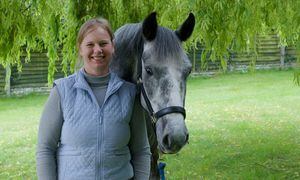
“When the time came to university I couldn’t wrench myself away from the horses, and I only stuck it out for a month before moving in with the horse dealer and spending the next five years with him.
“Without the learning that I experienced there, I wouldn’t be doing what I’m doing now.
“I was totally immersed in the horses, we lived in a mobile home and could hear the horses munching their hay in the barn next door as we went to sleep.
“Every aspect of the horses’ care was my responsibility,” explains Sue who is married to Simon and has a five-year-old son named Philip.
“Once I realised that a dealer’s life was not for me, I achieved my BHSAI – an instructors qualification from the British Horse Society – and the Monty Roberts Preliminary Certificate in Horsemanship and started working freelance and teaching at a local riding school.
“Gradually, I became known for the behavioural work that I did and in particular for working with difficult horses,” says Sue, who was registered as one of the first Intelligent Horsemanship Recommended Trainers.
“Over time, I started to recognise that the horses with ‘ridden’ problems often seemed to be ‘not quite right’. I didn’t really know how or why, but I knew they needed help with something other than their behaviour.
“I’d recommend that clients contact their vet and physio to get the horse treated and then call me back to sort the behaviour after that. All too often I went back and the ‘physical stuff’ was supposedly fixed, but to me things still didn’t seem right.
“So I decided that if you want a job done properly, do it yourself, and I went back to university to study physiotherapy. I’d done a human massage course out of interest a few years before, and I was studying with the Open University which helped me get a place at Kings College London,” she says.
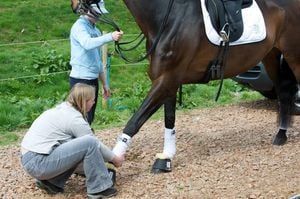
After qualifying as a chartered physiotherapist, Sue began working at Sandwell Hospital while keeping the horse work going during evenings and weekends.
Almost two years later she met her husband, Simon, through the Intelligent Horsemanship Association, and they toured together with horse trainer Roberts in the UK for many years.
She also gained a qualification as an equine massage therapist and was accepted on the two-year MSc course in veterinary physiotherapy at the Royal Veterinary College in London.
By the time she graduated as a veterinary physiotherapist, she had three strings to her bow – an instructor, a behaviourist and a chartered physiotherapist.
“Gradually my work has moved more and more into the physio field, specialising in problem horses where I can help differentiate between behaviour, training and pain because of the range of qualifications and experience,” she explains.
A typical day can see Sue on the road a lot as she travels around visiting owners and their horses.
“The day consists of travelling to clients, assessing and treating their horses, then travelling to the next client, and eventually getting home to the computer to do anything and everything else that needs doing.
“Sometimes there will just be one client at a yard, sometimes several. I can treat up to eight horses a day, occasionally more, but most days it’s five or six because of the travelling.
“I write notes on my iPad for each client when I’m with them, and a set is emailed to the vet as well to the client.
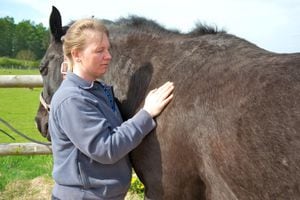
“Communication between all members of the horse’s core team is really important to me. I prefer direct communication rather than giving the owner a message to pass on, because that way less mistakes are made.
It’s hard enough to understand what a medical professional is telling you anyway, without being asked to pass the info on to the saddler, instructor, vet or farrier,” says Sue.
Some of the challenges that come with running her own business – The Horse Physio – are the cold, travelling and paperwork. But Sue says she has found ways to overcome them.
“I’ve bought the right equipment to wrap up against the cold , I have a few ‘clinics’ where people bring their horses to me rather than me travelling to them, plus I do ‘zone days’ where I work in certain areas on set days.
“And Simon is now practice manager for The Horse Physio, which reduces the admin from my point of view for that business at least,” explains Sue, who also runs the Ethical Horsemanship Association aimed at improving the welfare of horses throughout the world.
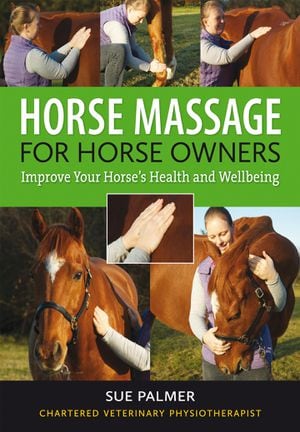
But her multifaceted job brings with it many rewards, says Sue, who has written two books – Horse Massage for Horse Owners and Understanding Horse Performance: Brain, Pain or Training? – which have also been made into DVDs.
“I enjoy helping people to make the most of their relationship with their horse, whether that’s physio to improve performance or physio to help keep an older horse comfortable.
“My grandad was a vet, but I never wanted to do anything that involved going inside the body in anyway, I love the body as a whole system, I find it eternally fascinating.
“I love being outdoors, I love the healing energy that the horses give out, I love spending my day chatting with people whose interests are similar to mine.
“I love working with people who want to do the best for their horse,” says Sue.
“Throughout my career the horses have been my best teachers, and that’s as true today as it was 20 years ago,” she adds.

